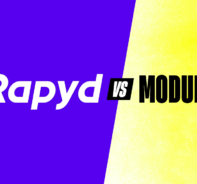Subscriptions and Recurring Billing are Transforming Business Models Across Industries
Table of Contents
Across all businesses, subscription payment models are changing how consumers read, listen to music, manage their fitness, watch television and so much more. What is behind this trend and why should businesses look at how they can adopt this model to grow their customer base and boost revenue? In this article, we’ll explore the trends, use cases and considerations to determine if a subscription model is right for you.
Why Is the Subscription Model so Popular?
Subscriptions were originally associated with the delivery of newspapers, magazines, cable TV and memberships. In the last decade, the subscription model has leveraged technology to evolve and become integral to the delivery of products and services in all industries. Today, more and more businesses are seeing subscriptions as a means to support their growth objectives.
With greater numbers of competitors and increased pricing pressure, the margin on physical products continues to shrink. The addition of a service element through a subscription offers companies an opportunity to differentiate their offerings and increase profitability. Online shoppers can be fickle and a clever targeted marketing campaign can win over brand loyalty.
Committing customers to a subscription and delivering a great experience can be a powerful means to acquire and retain customers. As more products and services become subscription-based, consumers are more comfortable with “buying into” the concept of access rather than ownership.
What Are the Pros and Cons of a Monthly Payment Model?
With a subscription offering, customers have a lower barrier to entry, with upfront costs ranging from low to non-existent. It enables businesses to trade low initial profit for high lifetime value while expanding their addressable market and gaining more predictable revenue.
Customer Benefits
Convenience – Once set up, the subscriber does not need to repeat the purchase or worry about running out – especially in the case of a service like Netflix, but also for staples like diapers or dog food. The time and hassle saved from not having to make a late dash to the store is something subscribers value.
On budget – There are many examples of brands that built their subscriber base using price as the USP, the Dollar Shave Club is a great example of this. Not only can subscribers make significant savings, but they also know what they are going to spend each month – helping them manage their budget.
Scalable – Over time, subscribers can opt to make changes to their “level” of subscription, with the flexibility to increase or decrease service levels.
Merchant Benefits
Customer value – A subscription creates a longer-term relationship with a customer that goes far beyond a single transaction. This translates into a higher customer lifetime value and is far more effective than acquiring new customers for one-off purchases. By continuing to communicate, engage and retain customers, businesses can build a loyal base and drive adoption to higher-prices and more profitable subscription tiers.
Predictability – Just as subscribers have a better idea of their spend, merchants benefit from a clearer picture of demand and revenue expectations. This makes it easier to calculate and predict customer lifetime value and use that information to measure ROI from marketing and product investments.
Customer relationships – With more communication and recurring touch-points, businesses can learn more about how customers engage or consume their products and services. These insights can allow businesses to make any necessary adjustments to improve customer satisfaction, minimize churn, and create cross-sell and up-sell opportunities.
Challenges
There are some aspects of the model that can create issues for both the customer and the merchant, but being aware of these and prepared to address them can ensure that the right action is taken at the right time.
Waste – Customers may feel that they are paying for something that they aren’t using. This is more evident in product subscriptions where there is a physical and visible reminder that they are purchasing something that is not being used.
Cancellation – Cancelling subscriptions can be difficult. This may seem good to merchants looking to reduce churn. But a reputation for difficult cancellation policies can limit new customer acquisition. Instead of making it difficult to cancel, merchants should focus on making it easy to provide feedback on why customers cancel, so they can make adjustments that prevent future churn.
Ongoing appeal – Depending on the product or service, the need to refresh the offering will differ, but only through constant engagement with the customer and watching the wider market can a merchant ensure that their offering is perceived as fresh and relevant.
Key Considerations
The processes to manage a subscription model differ greatly from the sale of a one-time product. There is significantly more data involved and a greater degree of complexity to be managed. Here are some of the areas that need to be thought through to optimize return on the development and management of a subscription model.
Value-based pricing – Understand what it is that the customer most values and build the pricing model to reflect that. Use tiers to maximize revenue by focusing on what the customer is looking for in a feature set and what they are willing to pay for. There is a wide range of options open from pure product to pure service and a hybrid model that incorporates a physical product with a value-add service as seen with wearable tech such as smart sneakers and fitness watches.
Choice – Customers want to subscribe to a product or service that best suits their needs. By presenting a number of levels at different price points, there is an opportunity to appeal to more customers and increase acquisition. Having a top tier offering at a premium price can also provide the context to position a mid-tier option as good value by comparison.
Simple sign-up – The experience of new customers signing up for a subscription needs to be easy, efficient and automated. It should also be consistent across all channels: online, mobile, or through direct engagement over the phone or in-store.
Customer retention – Although signing up new subscribers is important, over time recurring revenue will rely more on existing customers. This requires close attention to be paid to how the customer is using the product to mitigate churn.
Subscription payment processing – Offering customers their preferred payment methods and recurring billing is critical. It’s important to understand regional payment trends and customer preferences and finding the most effective ways to accept payments from customers in every market you serve.
Research and review – Customer communication is important to gain the insights and essential context to make effective changes to the offering or to the subscription model. Data and analytics can also provide financial and operational information to help the business build on success and address areas for improvement.
Is The Subscription Payment Model Right For Your Business?
The subscription business model is a powerful driver for success. Companies looking to understand how this model works and how it can work for their business must focus on creating great experiences for the subscribers to minimize churn and accelerate profitable growth.
Subscribe Via Email
Thank You!
You’ve Been Subscribed.



